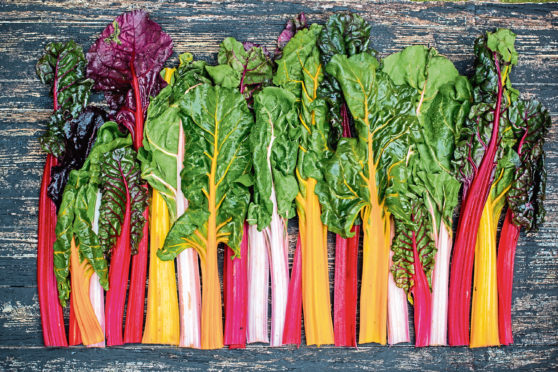
Echinaceas from North America make a splash in autumn with their tall, daisy-like flowers in rich colours, but there are white varieties too that have a more subtle appearance. All of them are strong growers that thrive in moist soil and which quickly form into dense clumps.
If you want a change from the usual winter vegetables of cabbage, Brussels sprouts and leeks, then both chard and kale are worth growing.
Pick only the outer leaves while leaving the hearts to grow and these plants, which are as decorative as they are delicious, will provide nutrient-packed harvests throughout the winter months.
“Bright Lights” is the best known of the colourful chards and its red and yellow stems are tasty when stir-fried with garlic with the shredded leaves just added at the last minute to cook until they have wilted.
Of the kales, “Cavolo Nero”, which is Italian black kale, is a favourite and like all kales it is easy to grow, starting from seed sown into small pots in spring and then planted out in summer.
It’s best grown in soil that hasn’t recently been fed or manured as this produces soft growth that is more susceptible to slugs and to winter damage.
What can cause problems for this and all brassicas, however, are strong winds and frost, which can both uproot plants and cause them to topple. Screening the vegetable garden with mesh will help to filter the winds and firming down roots after frosty spells should keep plants upright.
Meanwhile, salad leaves sown in the summer should be ready for picking. Pop a cloche or some fleece over the plants now to protect them from the elements and to keep them growing.
If you are growing parsley then now is the time to pot up some plants and bring them under cover before temperatures start to drop and check on cuttings of sage, lavender and other woody herbs taken last month to see if they are now ready for moving into individual pots.
Keep these slightly on the dry side over the winter to prevent them from rotting and then start watering them regularly again next spring, ready for planting out in early summer.
Do the same with scented pelargoniums, such as “Attar of Roses”, which can be used to make teas and cordials and added to preserves to give them a delicious perfume. If any show signs of putting on growth, then nip out the tips and you’ll end up with bushier plants and far more flowers than if you had left them unchecked.

Enjoy the convenience of having The Sunday Post delivered as a digital ePaper straight to your smartphone, tablet or computer.
Subscribe for only £5.49 a month and enjoy all the benefits of the printed paper as a digital replica.
Subscribe